Sonya Cotton
Found at Some Velvet Blog, I’m smitten of late with the songs of San Franciscan
“Red River” (5:55 mp3):
Hunters from Sonya Cotton on Vimeo.
Found at Some Velvet Blog, I’m smitten of late with the songs of San Franciscan
“Red River” (5:55 mp3):
Hunters from Sonya Cotton on Vimeo.
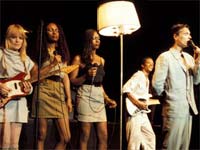
![]() Hearing Voices from NPR®
Hearing Voices from NPR®
089 Musicians’ Minds: Interviewing Music Makers
Host: Lynn Neary of NPR
Airs week of: 2011-04-27 (Originally: 2010-04-21)
“Musicians’ Minds” (52:00 mp3):
Interviews with musicians that took unexpected turns:
Host Lynne Neary’s talk with the head Talking Heads, ends up with her answering his questions. From 1984, the “Stop Making Sense” movie and Speaking in Tongues album had just been released.
Surveying the sonic spectrum of musicians warming up for a performance. We hear old-time singer Abigail Washburn, concert pianist Lang Lang, Brazilian singer Flora Purim, mezzo-soprano Cecilia Bartoli, Tuvan rocker Albert Kuvezin, singer songwriters Gillian Welch and Dar Williams, bel canto tenor Lawrence Brownlee, and cellist Yo-Yo Ma. Montage by David Schulman
One of the world’s great operatic singers explores what it means to approach the human voice as an instrument — like a trumpet or violin, produced by David Schulman.
The cutup artists, Negativland, chew up and spit out the media, turning their NPR interview into audio art; accompanied with excerpts from their 1987 Escape from Noise.
The former Grateful Dead drummer and respected ethnomusicologist takes us on an audio tour of his extensive worldwide percussion collection. He talks about the rhythm “timeline” from his 1987 book and CD Planet Drum: A Celebration of Percussion and Rhythm.
 TAL crossed the 400th episode line with an hour of “Stories Pitched by Our Parents.” Among them was one Nancy Updike did with her dad about the Erie Canal, featuring this addictive original ditty she co-writ w/ musician Dave Hill:
TAL crossed the 400th episode line with an hour of “Stories Pitched by Our Parents.” Among them was one Nancy Updike did with her dad about the Erie Canal, featuring this addictive original ditty she co-writ w/ musician Dave Hill:
“Nancy’s Erie Song” (3:31 mp3)
![]()
 The clerics at the Jumeirah Mosque in the United Arab Emirate of Dubai are opening their doors to tourists. To help demystify Islam, visitors learn the basics of the religion with a guide.
The clerics at the Jumeirah Mosque in the United Arab Emirate of Dubai are opening their doors to tourists. To help demystify Islam, visitors learn the basics of the religion with a guide.
Aired on PRI The World; by producer Jake Warga, “Jumeirah Mosque” (3:04 mp3):
![]()
 Recently, as part of the US draw-down in Iraq, the US base in Tikrit, “JCC” or Joint Coordination Center, was handed back to the Iraqis. Sergeant First Class George Havel, a soldier with 232 Regiment spent four months in Tikrit, helping to coordinate emergency services. Sargeant Havel gave journalist Jake Warga a tour of Mahmoon Palace, originally built to celebrate Saddam Hussein’s birthdays. US forces had been occupying the palace up until the recent hand-over, living in its marbled halls under golden chandeliers.
Recently, as part of the US draw-down in Iraq, the US base in Tikrit, “JCC” or Joint Coordination Center, was handed back to the Iraqis. Sergeant First Class George Havel, a soldier with 232 Regiment spent four months in Tikrit, helping to coordinate emergency services. Sargeant Havel gave journalist Jake Warga a tour of Mahmoon Palace, originally built to celebrate Saddam Hussein’s birthdays. US forces had been occupying the palace up until the recent hand-over, living in its marbled halls under golden chandeliers.
Aired on PRI The World; by producer Jake Warga, “Mahmoon Palace” (3:24 mp3):
NYTimes offers A Tax Form for the Marginally Employed. Freelancers: that’s you:
By graphic designer Sam Potts.
 HV is heavily involved in a new collaborative project/domain, the PubMedia Commons at PubMedia.us.
HV is heavily involved in a new collaborative project/domain, the PubMedia Commons at PubMedia.us.
It’s an aggregation of different blogs about public media. You can read excerpts & link-to them all their posts from one webpage., and one feed:
feeds.feedburner.com/PubmediaPlanet
(An aggregation of blogs is known as a “planet“). We also have weekly features of audio, video, and multi-media work. And there’s a place for pubmedia web folk to share code & hacks (a lot re: WordPress). Future plans include merging w/ PublicMediaCamp & PubMediaChat.
Malcolm McLaren (1946-2010) was an original mixer, mashup-er, sampler, manager, and modern music maker. Here’s some selections from his career:
Bow Wow Wow from See Jungle! See Jungle! Go Join Your Gang, Yeah. City All Over! Go Ape Crazy (1981):
McLaren from Duck Rock (1983):
McLaren from Fans (1984):
British Airways Commercial, music: McLaren w/ Yanni (1989):
McLaren, samples: Esther Bigeou’s “St. Louis Blues” & “She’s Not There” Zombies, from
Kill Bill Vol. 2 soundtrack (2004):
 A 2-article rundown on distributing pubradio programs, and the $s involved, is published in AIRblast: Part I and Part II. Features lotsa intervus with producers and program directors. Evals who’s buying what for how long and how much. And it’s loaded w/ how-tos, data, and personal perspectives on PRSS and PRX.
A 2-article rundown on distributing pubradio programs, and the $s involved, is published in AIRblast: Part I and Part II. Features lotsa intervus with producers and program directors. Evals who’s buying what for how long and how much. And it’s loaded w/ how-tos, data, and personal perspectives on PRSS and PRX.
Producer Nancy Solomon recently posted her first piece on PRX: “The interface works great; I was pleasantly surprised how easy it was. Their help desk was super helpful and easy to get a hold of. I like the way the page looks; I like the way it’s laid out and the flexibility the format gives you to put both segments and whole pieces up. I was also amazed and pleased at how accessible John Barth was to talk about how best to promote the show.”
So, if a radio piece falls in the PRX forest, will a PD hear the sound? Not always. “Producers putting stuff on PRX is like thousands of crack addicts selling their junk on street corners,” says Charles Lane, producer, WHSU News reporter, and former PRX election curator. “We’re just curious street exhibits with sad eyes hoping programmers might spot our wares, as they race to wherever they’re going.”
But what producers really want to know is: How’s it work? And: How rich will I get?
The final four games were great, but even better was seeing the Prez take on former pro Pacers star Clark Kellog in a game of HORSE, renamed POTUS for this CBS playground matchup. Makes me proud to have a Prez that can talk policy, talk trash, while consistently sinking nada-but-net from 3-point land:
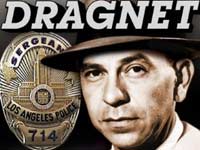
![]() Hearing Voices from NPR®
Hearing Voices from NPR®
088 Scene of the Crime: Victims, Cops, and Criminals
Host: Jake Warga of Hearing Voices
Airs week of: 2011-04-13 (Originally: 2010-03-31)
“Scene of the Crime” (52:00 mp3):
There will be blood:
An archival interview with 1950s NYC crime scene photographer, Arthur Fellig (1899-1968), aka, Weegee. SoundPortraits has more of this July 1945 interview by nationally-syndicated talk show host Mary Margaret McBride (WEAF-New York City). (Music: “Angel of Solitude” by Alias.)
Casey (no first name ever revealed) was crime photographer for the fictional Morning Express newspaper. He and reporter Ann Williams snapped shots, tracked criminals, and solved crimes. This excerpt from episode 330 (of a total 431) of the popular half-hour mystery-adventure series aired 1950-03-02.
A short clip from the third episode (1948-10-10) of this NBC show, starring Van Heflin with a script by Milton Geiger based on the stories of Raymond Chandler.
The This American Life producer spends a couple days riding around L.A. with the professional “Crime Scene Cleaners, specializing in homocides, suicides, and accidental deaths.”
Some 1966 sweets from the go-go-booted silver-throated blonde bombshell…
“Sugar Town” Nancy Sinatra:
Yes, the same song She (of & Him) sang in (500) Dys. o’ Summer. And here’s Frank’s kid in her full glory on the album cover:
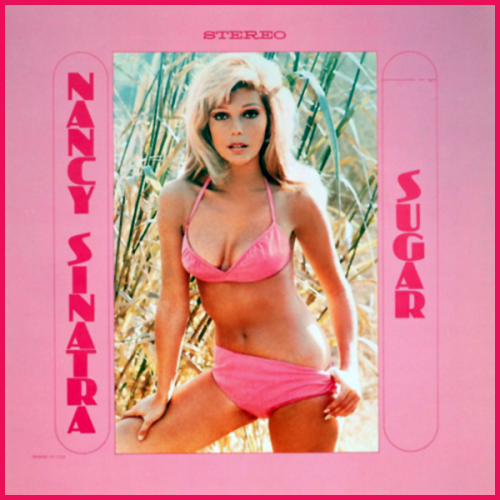
Wired has selected some staggering NASA images of islands in “Out of the Blue: Islands Seen From Space:”

Atafu Atoll, Tokelau, Pacific Ocean
Made up of coral reefs that surrounded the flanks of a volcano that has since become inactive and submerged. Like many tropical atolls, Atafu is very low lying and vulnerable to sea-level rise. This photograph was taken by astronauts aboard the International Space Station in January.

Galapagos Islands, Pacific Ocean
…are the tops of volcanoes on the sea floor off the coast of South America along the equator. This image was taken by the Landsat 7 satellite in 2001.
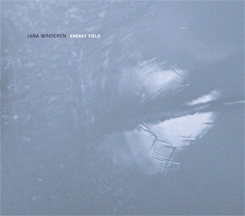 A new sound symphony by Jana Winderen artist/recordist is out on Touch Music. She calls her album Energy Field. Here’s a sample (5:20):
A new sound symphony by Jana Winderen artist/recordist is out on Touch Music. She calls her album Energy Field. Here’s a sample (5:20):
Armed with four 8011 DPA hydrophones, DPA 4060 omni mics, a Telinga parabolic reflector mic and and a Sound Devices 744T digital hard disk recorder, Jana Winderen studies and records wild places which have a particular importance in our understanding of the complexity and fragility of marine ecosystems.
The recordings were made on field trips to the Barents Sea (north of Norway and Russia), Greenland and Norway, deep in crevasses of glaciers, in fjords and in the open ocean. These elements are then edited and layered into a powerful descriptive soundscape. The open spaces of Greenland, northern winds, ravens and dogs in an icy landscape provide the setting for these haunting but dynamic pieces. Sounds of crustaceans, fish such as cod, haddock, herring and pollock recorded as they are hunting, calling for a mate or orientating themselves in their environment, are all included in the mix.
From her artist statement:
I have been occupied with finding sounds from unseen sources of sound, like blind field recordings. Over the last three years I have collected recordings made by hydrophones, from rivers, shores and the ocean, and more recently also from glaciers in Greenland, Iceland and Norway. In the depths of the oceans there are invisible but audible soundscapes, about which we are largely ignorant, even if the oceans cover 70% of our planet.
Jana Winderen: site | Touch | Noisiest Guys
![]() The first of our Soldier’s Soundtrack series: Embedded with the 3rd Infantry Division, US Army, Baghdad, the producer plugged into the soldier’s iPods, asking them what they were listening to, why they liked the song, and what their lives were like. To Queen’s “Bohemian Rhapsody,” Major James Lockridge tells us, “The United States Army can go anywhere at anytime or anyplace. I learned that during the first war. I wouldn’t want to be anybody that had to face the United States.”
The first of our Soldier’s Soundtrack series: Embedded with the 3rd Infantry Division, US Army, Baghdad, the producer plugged into the soldier’s iPods, asking them what they were listening to, why they liked the song, and what their lives were like. To Queen’s “Bohemian Rhapsody,” Major James Lockridge tells us, “The United States Army can go anywhere at anytime or anyplace. I learned that during the first war. I wouldn’t want to be anybody that had to face the United States.”
Aired on PRI The World; by producer Jake Warga, “Iraq: Major Lockridge- Bohemian Rhapsody” (2:47 mp3):

Photo © Jake Warga: “Major James Lockridge, after learning of an IED explosion that killed 5, wounded 17, in Tuz, Iraq. We had been up all night looking for bombs. We missed it. I felt it.”

![]() Hearing Voices from NPR®
Hearing Voices from NPR®
087 Thumb and Thumber: The Joy of Hitchhiking
Host: Larry Massett of Hearing Voices
Airs week of: 2011-04-06 (Originally: 2010-03-24)
“Thumb and Thumber” (52:00 mp3):
Is hitchhiking the great American adventure sport or just a risky last resort for folks who can’t come up with bus fare?:
Hitchhiking was once common, These days it’s aquired an aura of danger and desperation. Who wants to take the risk — especially after all those gruesome stories about rapists and serial killers? But occasionally you can still spot some guy stranded on the side of a road, sign out, thumb up, hoping that your car will be his salvation. Is he dangerous? Insane? Or just plain dirty? Maybe we should stop and find out. (PRX)
The Brit duo (Nick Franglen and Fred Deakin) from their album ’64-’95, with the voice of William Shatner.
Hitchhiking cross-country with a telegram for the Dalai Llama, a prayer for compassion from the cops, and half your net worth invested in a pair of high-top sneakers.
Another anatomy of a news story, this from the Onion:
“Breaking News: Some Bullshit Happening Somewhere”
via Gravity Medium.
Some blog posts about exploding and expanding what a blog-post can be: “The Death Of The (Boring) Blog Post” in Smashing Magazine and Design Informer with “20 Extraordinary Blogs With Unique Post Designs.”
The above articles inspired our take on “The Art of Noises.”
A couple screenshots of post-blogpost-death blogposts:

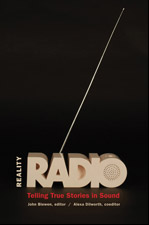 The publshers of Reality Radio have allowed to post a bit of their book. From John Biewen’s Introduction:
The publshers of Reality Radio have allowed to post a bit of their book. From John Biewen’s Introduction:
The goal is to bring together producers with distinctive, powerful, and richly varied approaches to their craft. Some of our essayists call themselves audio artists. They push the boundaries of journalism to the breaking point—okay, beyond the breaking point—in the service of an aesthetic vision but also in pursuit of a different (higher?) sort of truth. Others describe themselves primarily as storytellers, drawing mainly on the narrative power of the spoken word. Still others see themselves as journalists; on the surface, at least, they emphasize information over formal innovation. But the journalistic documentarians, too, give careful attention to form and, in fact, employ plenty of (conventionally sanctioned) artifice along the way.
Here’s an excerpt of the essay “Coming Home,†by Katie Davis:
A boy rumbles by on his skateboard, says his name is Julio and asks to pet the dogs. Sure. Another twelve-year-old bellows like a carnival hawker, “Hey lady, you got a tire patch?†Sure. And I give Joaquin ten dollars to run to the bike store to buy three patch kits, one for him, and the rest I’ll keep for other kids. The super from the building down the street notices the cluster of kids and lugs up two old bikes he found in the alley. And this is how, without planning, I start a recycle-a-bicycle program on my front porch. Everything takes place on my front porch for a long while.
I become known as the “bike lady,†the lady who always has granola bars and time to sit and listen. After a year, I form a youth group called the Urban Rangers and begin raising money to pay for bike parts and snacks. Two teenagers ask me start a basketball team. Sure why not? And then as I explain my philosophy to the guys, that winning is not important on this team, and everybody will get to play in every game. “No, no,†the boys interrupt and begin coaching me on how to be a coach. The dialogue is funny and that night the rusty part of my radio brain begins chanting, Good tape. Good tape.
So, I call an old friend at NPR and float the idea of writing an “essay with tape†about my team. I warn the show producer that the story will be personal, like a diary, that I break the rules of journalism in every paragraph. I write in the first person and I have not kept any objective distance from these boys. I give money to two brothers because I know they are hungry. I hire another kid’s father because they are struggling on $12,000 a year. The boys hang out at my house, they come to tell me about problems. I no longer wanted any distance between me and these neighborhood kids. NPR solves the issue of my status by calling me a commentator. My transition from reporter to commentator took four years of neighborhood porch sitting and trouble shooting and is distilled into this one word.
From Reality Radio: Telling True Stories in Sound, edited by John Biewen.
© 2010 by the Center for Documentary Studies.
Used by permission of the University of North Carolina Press.
Ka
The House Gates Built is not normally known as a fountain of innovation. But MS’s LiveLabs has really delivered the future in the form of Pivot. It’a web application — “don’t call it a browser”:
getting lasix
“Gary Flake: is Pivot a turning point for web exploration?”
ativan online
We’re navigating the web for the first time as if it’s actually a web, not page to page, but at a higher level of abstraction… So right now, in this world, we think about data as being this curse. We talk about the curse of information overload. We talk about drowning in data. What if we can actually turn that upside down and turn the web upside down, so that instead of one thing to the next, we get used to the habit of being able to go from many things to many things, and then being able to see the patterns that were otherwise hidden? If we can do that, then, instead of being trapped in data, we might actually extract information. And, instead of dealing just with information, we can tease out knowledge. And if we get the knowledge, then maybe even there’s wisdom to be found.
—Gary Flake, Technical Fellow, Microsoft; founder/director, Live Labs
Also check the TED talk for LiveLabs Photosynth — another Seadragon derivative.